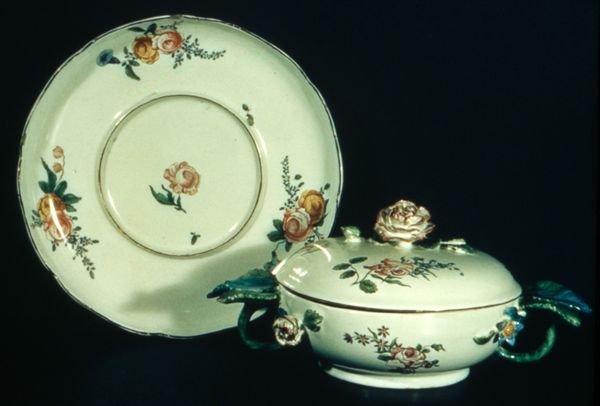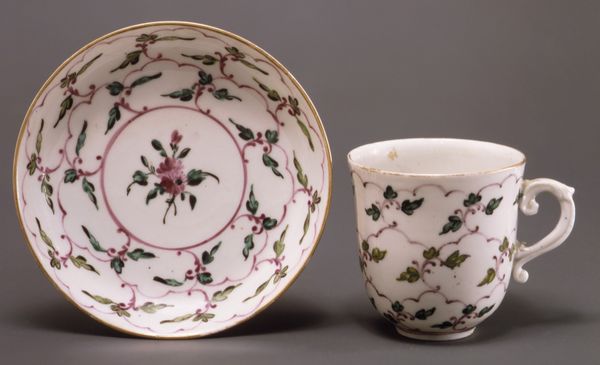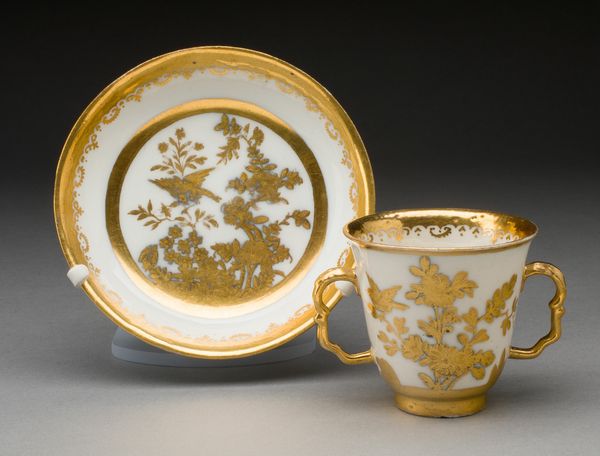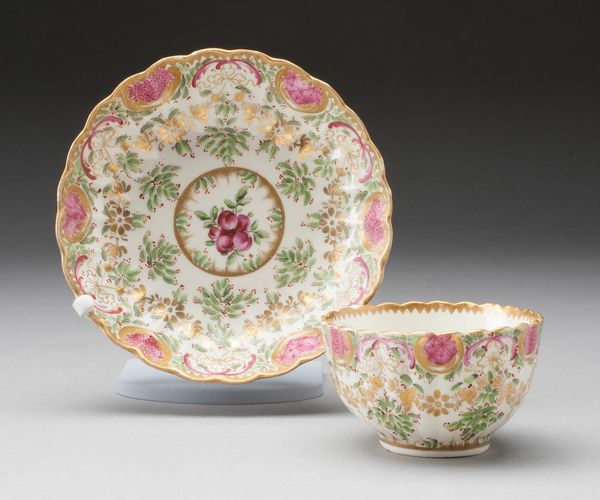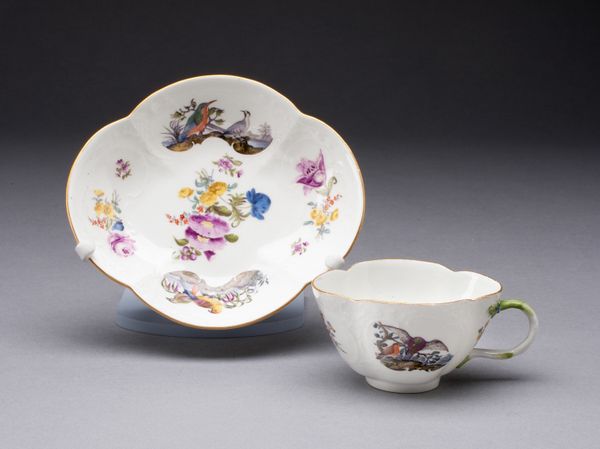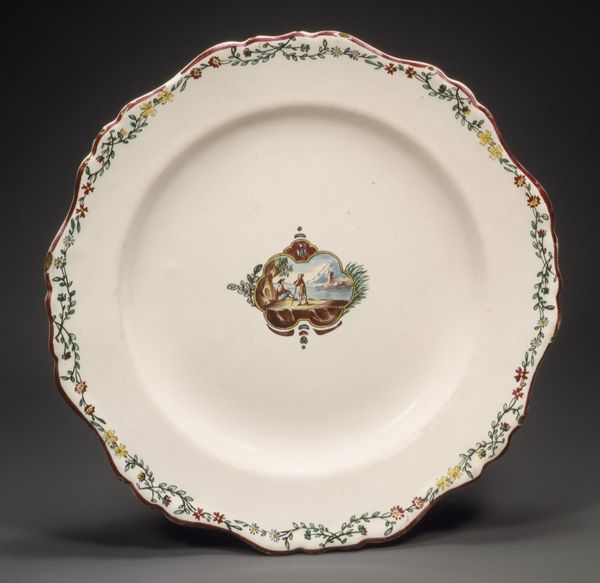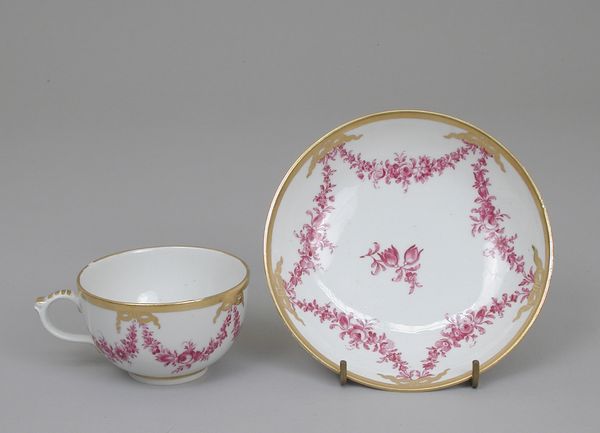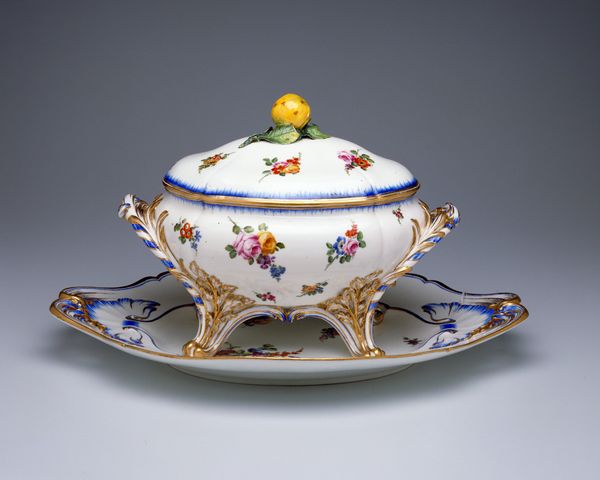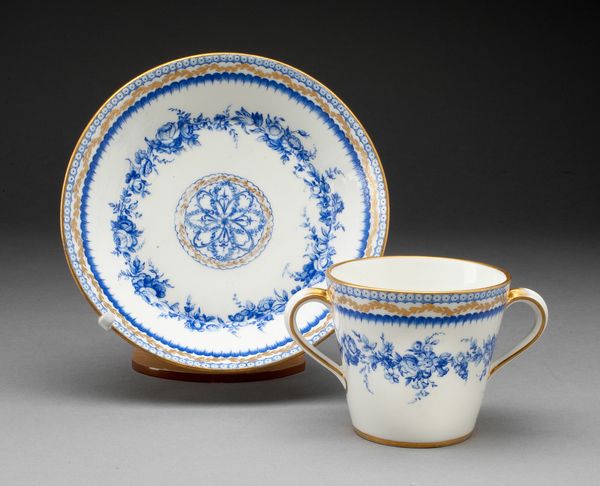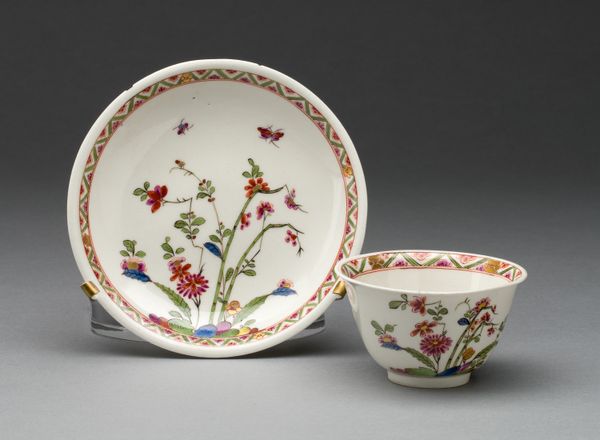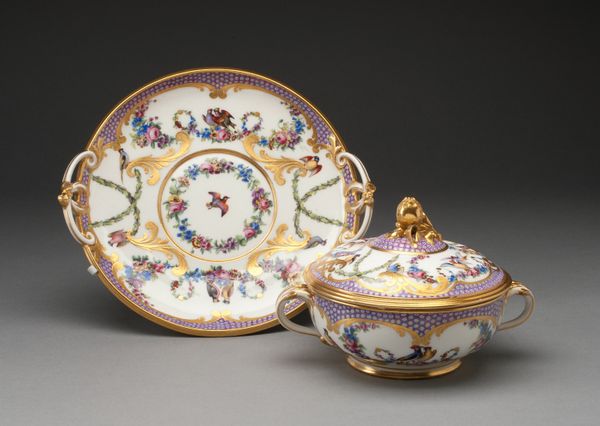
ceramic, porcelain, sculpture
#
ceramic
#
flower
#
porcelain
#
stoneware
#
sculpture
#
ceramic
#
earthenware
#
decorative-art
#
erotic-art
#
rococo
Dimensions: Overall (cup .113): 3/16 × 3 1/2 in. (0.5 × 8.9 cm); Overall (saucer .114): 1 1/4 × 5 3/4 in. (3.2 × 14.6 cm)
Copyright: Public Domain
Curator: This delightful cup and saucer, dating back to 1738, were crafted at the esteemed Meissen Manufactory. They're currently part of the collection here at the Metropolitan Museum of Art. Editor: Oh, it’s charming. Such a light and airy feel, almost as if it's meant for some ethereal tea party. The fluted porcelain gives it an unexpected sculptural quality. Curator: Precisely. Meissen, of course, held the formula for hard-paste porcelain in Europe for many years. Notice the subtle, almost seashell-like ribbing molded into the cup and saucer—very evocative. It invites you to hold it, doesn't it? Editor: It does! And then those scattered floral arrangements; they're quite asymmetrical and seem almost randomly placed, adding a touch of whimsy, quite distinct from formal European symmetry. Is that characteristic of the period? Curator: Absolutely. This is Rococo at its most playful. These aren’t stiff, allegorical emblems. Instead, the flowers speak to nature’s inherent asymmetry and its vital essence. Editor: I find that element very telling, there’s that desire for liberation from symmetry also playing out in its swirling texture. They signal cultural shift towards individualized sensory experience, wouldn’t you agree? Curator: Without a doubt. The gold trim, too, isn't merely decorative. It frames each piece like a miniature painting, emphasizing the intimate rituals that were often represented by it. The act of drinking tea from such a cup becomes symbolic. Editor: So true. These flowers act as portals to personal memories and perhaps evoke intimate settings where rituals and shared experiences occurred. Curator: It is quite something how such small objects can encapsulate broader societal movements, right down to the sensory appreciation of a flower. Editor: Absolutely. It makes you reconsider the emotional depth inherent in objects of everyday life.
Comments
No comments
Be the first to comment and join the conversation on the ultimate creative platform.
